
|   |

|   |
Kathak Pratyagati, a kaleidoscopic journey - Sangeeta Lad Photos: Swati Rane October 30, 2016 In celebration of Kojagiri Pournima, Dadar Bhagini Samaaj, Mumbai, presented Kathak Pratayagatee by Nrityadarpana Foundation on October 23, 2016 under the creative direction of Guru Paullomi Mukherjee with Harshal Waadavlikar on tabla, Aparna Biwalkar on vocal and Vishal Burkhe on the sitar. An onward journey of Kathak dance from the temples to the Moghul era and its evolution till date, Kathak Pratyagatee presented a syncretic movement that encompassed religion, culture, age and geography. Kathak dance as it traverses through time, began with the Saraswati Vandana, Ya kundendu rendered by Sneha Jagtap. 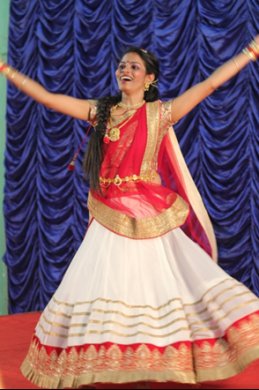 Sneha Jagtap performing Ya Kundendu 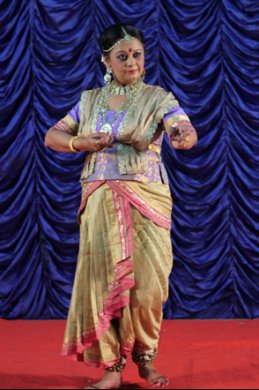 Paullomi Mukherjee in Kasturi Tilakam 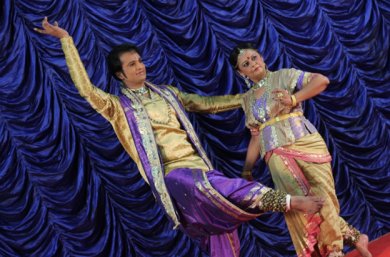 Sunil Sunkara and Paullomi Mukherjee in Ardhasheesh Ardhang 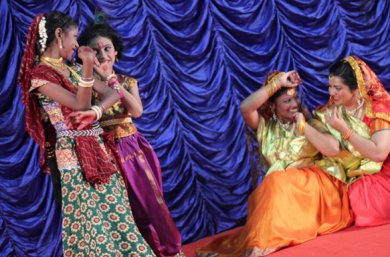 Dancers in Raas rachat Brij mei nandalala From the temple to the Moghul durbar Kathak dance underwent a complete makeover during the Moghul era. Chautaal presented by Swati Thorat was followed by a ghazal presented by Anupma Harshal. Anupma portrayed a nayika with a secret lover, who is suddenly faced with the situation where everyone has come to know of her love. Jhaptaal tarana by both Anupma and Manju Shastri, a creative piece composed by Aparna Biwalkar marked the end of this era. 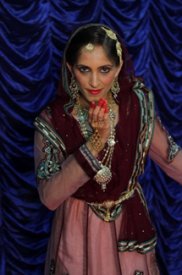 Swati Thorat in Saalami 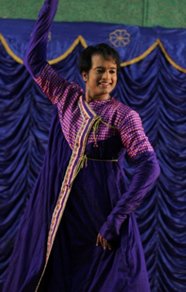 Sunil Sunkara in Chhap Tilak  Anupma Harshal and Manju Shastri in Tarana 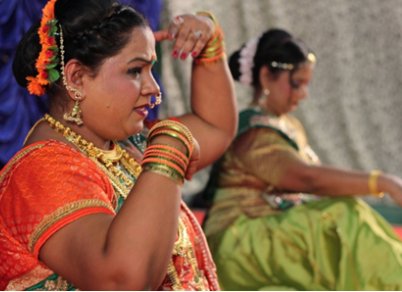 Charusheela Gollam and Paullomi Mukherjee 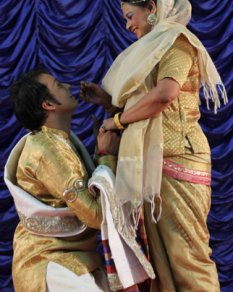 Bittersweet reunion of Kunti and Karna – Sunil Sunkara and Paullomi Mukherjee Kathak as a dance form is ever evolving, and the final section put forth conversations which had a flavor of the past but resonate in the present. A moment of reunion of Karna and Kunti captured by poet Rabindranath Tagore in the Karna Kunti Samwaad was presented by Paullomi and Sunil in an English translation. On the eve of the great war, did Kunti really come to strike a maternal chord with Karna or to shield her sons from his wrath? Paullomi and Sunil gave a theatrical performance based on Kathak abhinaya that truly embodied the characters. Sufi Kathak or the Sufi path as it is known is about the amalgam of the soul with divine. Sunil presented Chhap tilak sab cheeni, one of the most notable compositions of Amir Khusro. His simple but heartfelt abhinaya struck a chord with the audience. He ended the piece in the Sufi dervish spins that reflect meditation in motion. The cherry on the cake was the final performance, the baithaki Lawani and thumri that brought about a confluence of two sister art forms. The subtleness of Kathak and the loud abhinaya of Lawani were presented by Paullomi and Charusheela Gollam through two compositions, Rajasa and Lat uljhi sulja ja baalam, both of which depict the swaadeenapatika naayika. The program ended with the slogan for peace through the shloka Asato ma sat gamaya where all the dancers offered their humble ode to the audience and invoked the shanti rasa. |